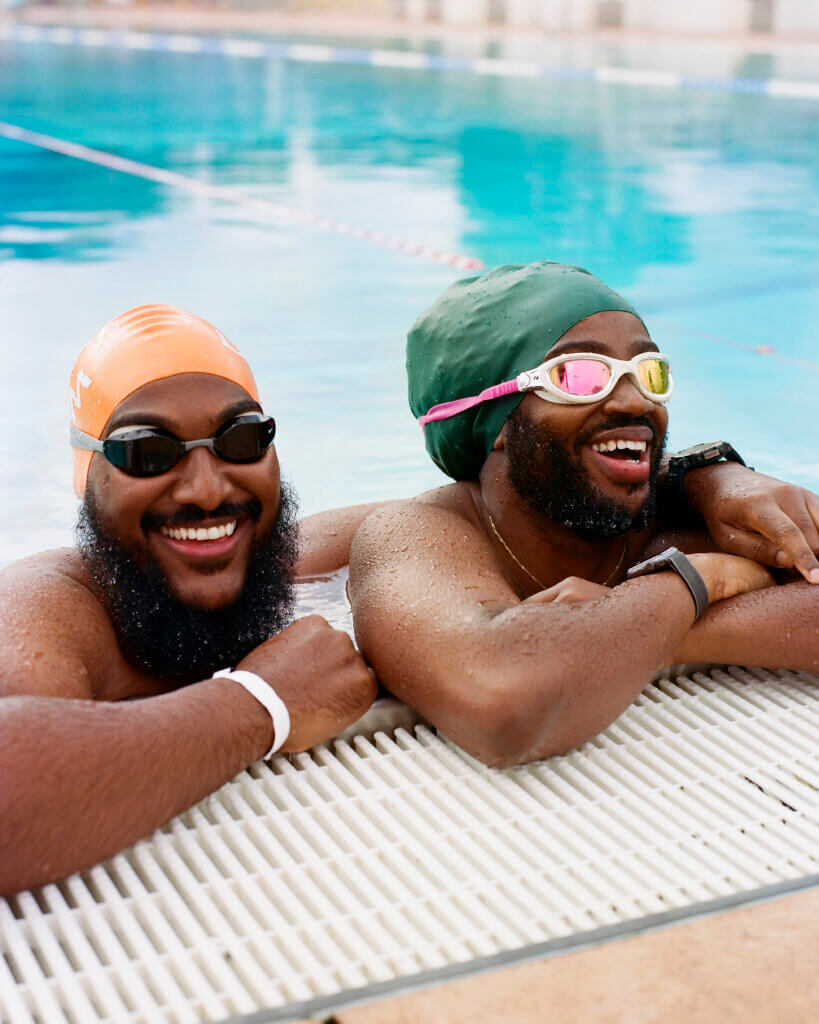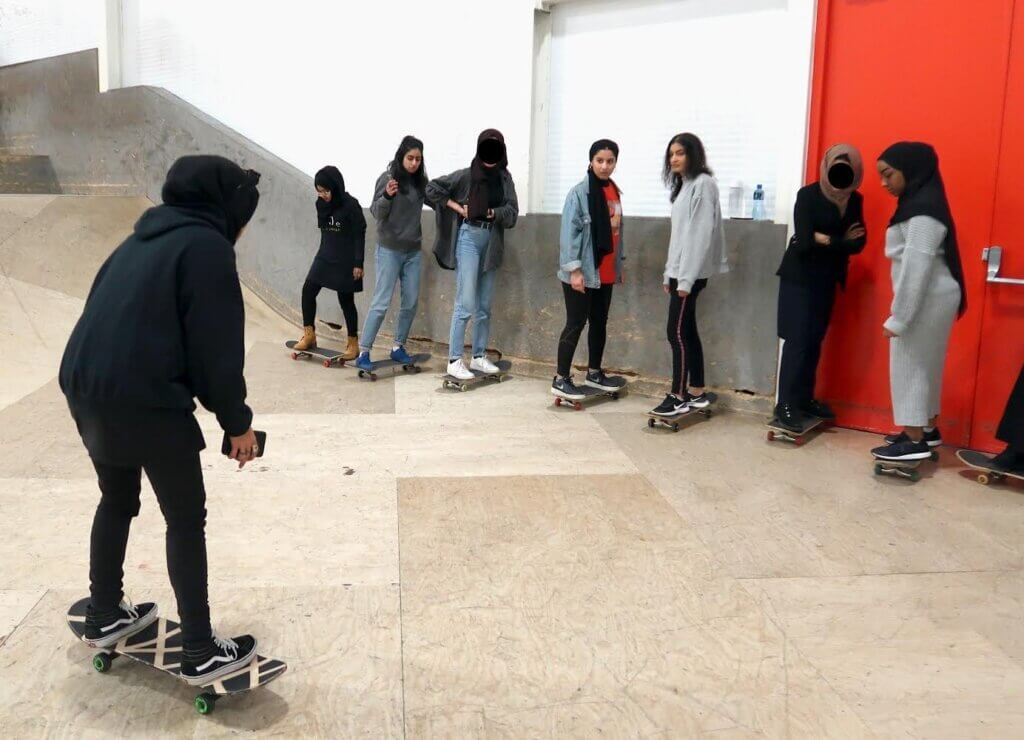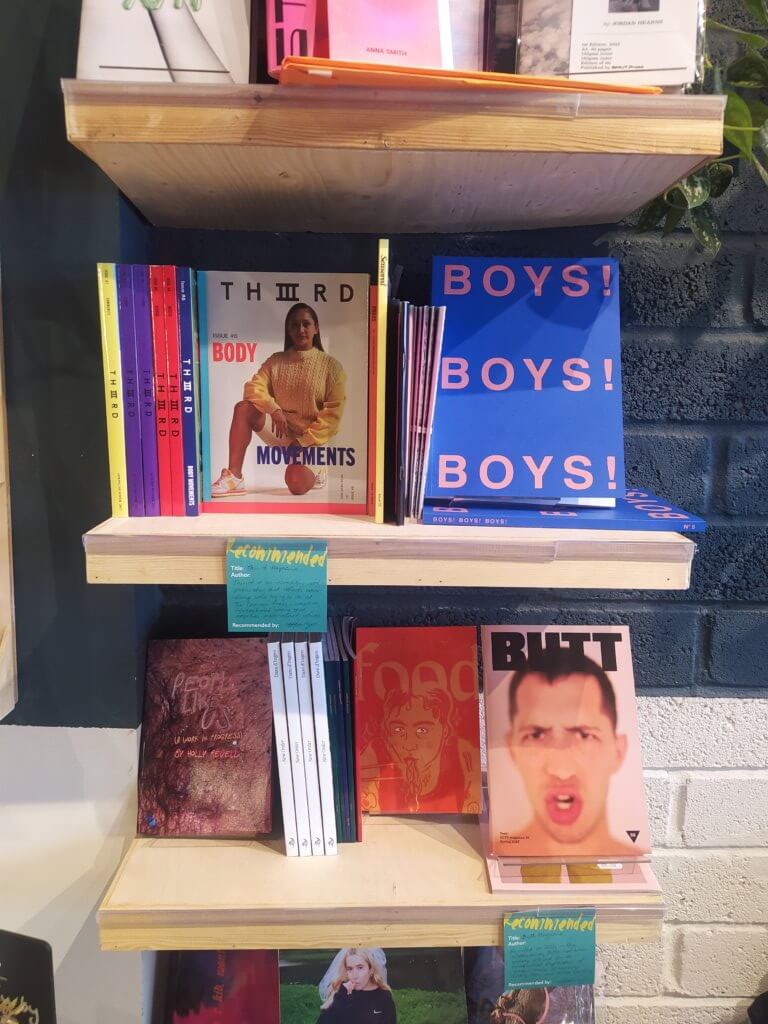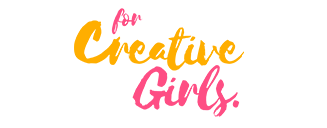Something incredible is happening in the world of sports! Beyond the jaw-dropping moves and impressive body movements, there’s a bigger story unfolding.
One of inclusivity, diversity and acceptance. Athletes are breaking barriers, defying expectations, and showing up in ways that affirm that every unique body has a place in sports. This extraordinary journey is so brilliantly captured by THIIRD Magazine’s sixth issue Body Movement, so much so that it was recognized by the British Talent Award, granting them a shortlist under the Diversity and Inclusion Award category.
Ahead of their first event Decolonise Your Yoga Day of a summer series inspired by the issue Body Movements, we spoke to the editor in chief, Rhona Ezuma about her takeaways from the issue, and why doing events was a must. Let’s dive in!

Source: THIIRD magazine
What motivated your interest in promoting inclusivity in sports and body movement?
It was witnessing the joy spurred on by sports that initially motivated the idea for the Body Movements issue. Over the last couple of years, we’ve been spoilt with international sporting events. We’ve had the Olympics and Paralympics, the world cup, Wimbledon and all sorts of highly acclaimed international sports events that have taken place in proximity to each other. It’s been impossible to ignore how joyful these events have been and how they have inspired and brought people together. In contrast, they’ve also highlighted that many of the prejudices, biases and inequalities within society are also upheld within the sporting world. That became the driving force behind us doing the issue as we wanted to ask and answer how things could be more inclusive.
Comparing your perception of inclusiveness before and after curating this issue on Body Movements, what changes did you observe?
When we started working on this issue, we had many more questions than answers. We wanted to understand why there were so few openly gay and queer athletes, what was holding back people of colour from taking up certain sports, like black people with swimming and what part gender binaries played in how we measured different athletes. In doing the issue, we realised that the answers to all those questions are complex but simple at the same time. Small acts of change can have massive impacts – especially from the top down. On a professional sports level, I’m referring to the policies sporting associations enforce around competition and their actions against discrimination.
On a social level, we have realised that creating inclusive communities around sports is another way to win in this area. We spoke to many amazing people who have found a love for sports or movement and then found a way to share that with a less exposed community.

Source: THIIRD magazine
Once you become an adult, learning a new skill can feel lonely and sometimes impossible. We realise people need an opportunity to be beginners and improvers when it comes to sports, and to do that feeling part of a group. It’s why we’re doing events! The first is a decolonised yoga mini-retreat with yoga teacher Kallie Schutt , and the second is a swim n’ cookout with Swim Dem crew, where we’ll swim together to tunes at a lido BBQ party.
In your opinion, what are some of the key barriers that prevent underrepresented groups from participating in sports and physical activities, and how can they be addressed?
Sports can cater to underrepresented groups in many different ways. Cultural sensitivity with things like the sportswear available for people to do activities, for example, can be a barrier or a gateway.
The fact that people identifiably fat, religious and old are not able to see people like them doing sports also creates a barrier. So pushing representation in sports could make it accessible to overlooked communities and people whose bodies do not fit the mould of what we think about when we see the word fitness.
And then the last thing I would say is we must move past the fear-mongering in sports. Creating a space of openness where people don’t feel they would have to extrapolate a part of their identity to participate would break a barrier, especially for religious, trans and gay folk.

Source: THIIRD magazine
Can you share some of your favourite initiatives, programs or individuals that has increased inclusivity in sports and body movement? What made their efforts successful?
We also spoke to a Skater UKTIS, an international collective for Muslim women who skate or want to take up skating. They have fused their faith with the love of the sport and formed a global community by doing this. It’s great to see women in hijabs and burkhas skating – that’s already a way of challenging stereotypes. However, approaching the sport in a way that makes sense for them culturally, is what raises that impact. Doing that is what can really redefine the benefits of sport for marginalised people.
We also got to speak to Alice Dearing, a co-founder of the Black Swimming Association. She is a Black mixed-race, retired gold medalist for team GB, so she knows her stuff. Her association has done a lot to encourage black people from inner cities like London to swim and also worked with British swimming organisations to ensure inclusive policy and procedure – that’s what is opening the door to more black professional swimmers.

Source: THIIRD magazine
How important is representation in sports and physical activities, and what steps can organisations take to ensure that all athletes and participants feel seen and valued?
We know that being active and doing sport is excellent for the health of our bodies and mental health. We can certainly do more to ensure that we are making overlooked groups to fitness spaces feel that they are spaces for them. But how often do we see people with bigger bodies featured in fitness campaigns in ways that aren’t highlighting their bodies as problems? So tackling representation is a good start, but we should go deeper. Changing how we do things could help cater to more people, but reaching out to the most marginalised and creating specifically marketed opportunities is essential.
How can the creative industry better support athletes and participants from underrepresented groups, both on and off the field, to help them succeed and thrive?
Firstly, by keeping them as part of the conversation. Sport is a massive source of inspiration to the creative industry, so using it as both a muse and subject matter is a great way to support athletes. That’s what we’ve done with this issue! We’ve spoken to over a dozen athletes, teachers and community leaders in sports about how we can make their disciplines more inclusive and what they need from higher bodies and the public. We’ve created beautiful editorials and images around our love of movement, and it has been an enormous project!
But there is also something special about remaining reactive in fighting against any discrimination athletes may face doing their job. That’s what we saw during the World Cup when the nation turned against its black players for missing penalties. That support for people’s humanities is a pull-up that forces associations to change and protect.

Source: THIIRD Magazine





